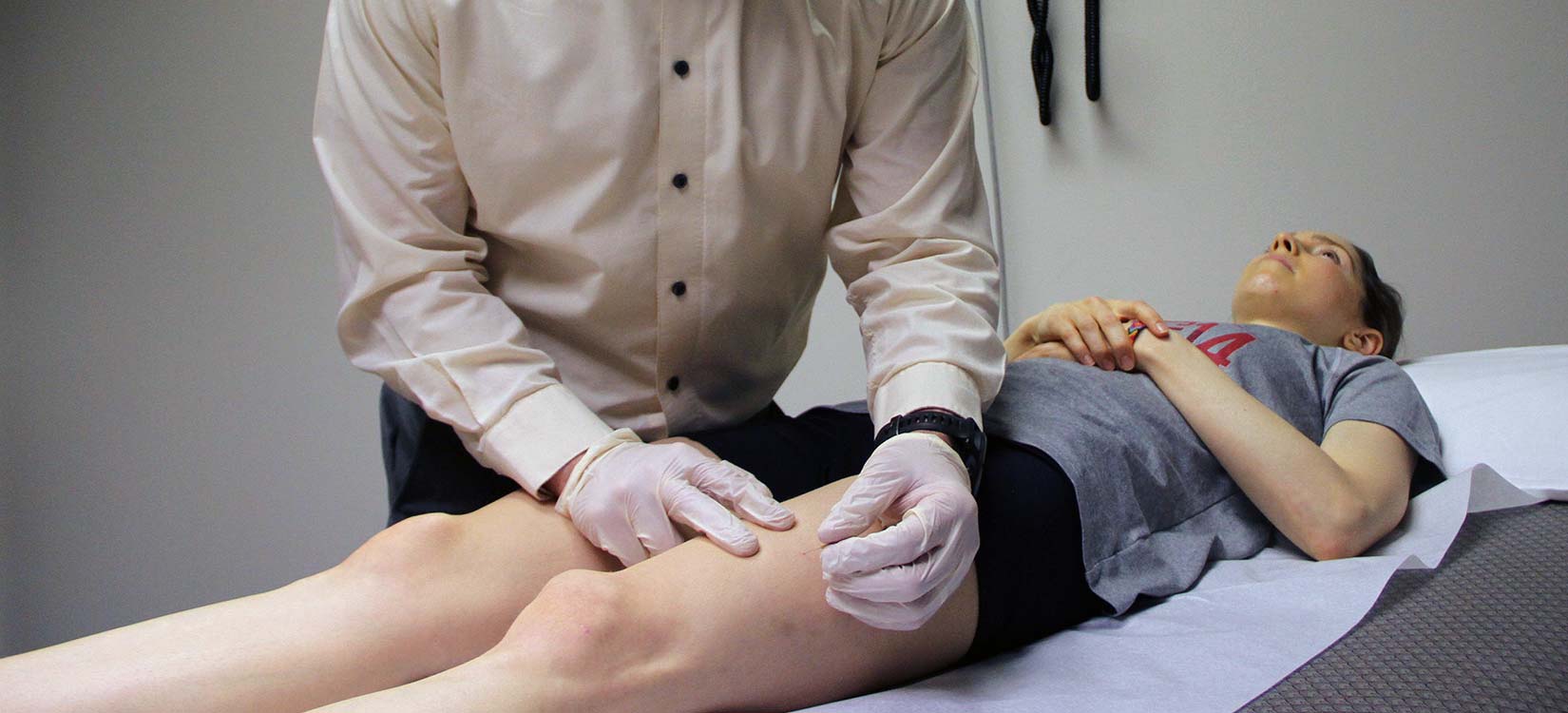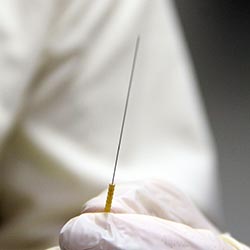10 facts about dry needling to ease pain

Picture this recent physical therapy session: A woman comes in with pain so bad around her kneecap that it keeps her from running, an activity she loves.
Her therapist inserts an ultrathin needle into a knotted muscle in her thigh. He gently moves the needle up and down and leaves it to rest while he tries another needle in a different part of the upper leg.
Eventually the muscle relaxes from the procedure called dry needling. Matt Briggs, a physical therapist at The Ohio State University Wexner Medical Center, can tell the resistance has eased because the needle glides through the muscle until it reaches bone. “It moves through like butter,” he says.
The patient, Alex Pierce, says she didn’t feel any pain from the dry needling, and the increased muscle function takes pressure off her knees.
Our Sports Medicine physical therapists have the lowdown for you on the practice that people are turning to more and more:
- It’s called dry needling because the needles don’t deliver an injection or medicine.
- The needles are so thin that Briggs can bend them with his finger. They’re not the same needles used to give you a shot.

- Dry needling goes right to the source of the pain or dysfunction, often making a difference more quickly than other therapies.
- Therapists approved to perform dry needling require many hours of training and ongoing skill reviews.
- The procedure is used for relief from chronic pain, relief from tension headaches, easing muscle tension, chronic pain conditions and pain in the jaw, neck, low back and shoulder. It can also provide relief for TMJ.
- It's unclear exactly how needling eases muscle tension, and that’s one reason Briggs is conducting a study on 150 people with pain around the kneecap, a common condition known as runner’s knee. “Dry needling has been growing in popularity for years for a number of conditions, and while patients often swear by it, we wanted some sort of proof that it works,” Briggs says.
- People often don’t feel the needles going in, but they sometimes feel an ache or cramp when the muscle relaxes, according to Briggs. “There is a theory that dry needling changes the way nerves and muscles function, and may even change the way our spinal cords help us perceive pain,” he explains. “Those are all things we hope to take a good look at during the study.”
- It can be used alone, but it’s often combined with other treatments, such as massage, foam rolling, electrical stimulation, and strengthening and stretching exercises.
- People who request dry needling go through a thorough examination to determine if the therapy is right for them.
- It’s offered for a fee through Sports Medicine, and patients need a referral from a doctor or nurse practitioner.
For Alex Pierce, the runner with kneecap pain, the therapy helped after a couple of sessions, going deeper than massage and easing tense leg muscles so she could restrengthen them to support her knees.


